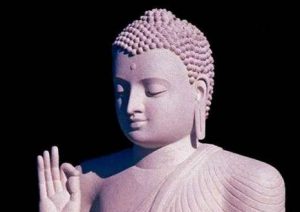
It’s not uncommon for the area I live in to be hit by high winds. There are relatively few trees and high buildings to act as a windbreak, so when the wind blows, it blows hard.
More than once, I’ve had to race out into the yard to grab some errant piece of patio furniture that was being pushed toward the neighbor’s house by a storm. And all of our animal shelters have extra bracing to keep them from falling over.
On the days when the wind is especially strong, I like to make a cup of tea and watch the trees sway from side to side.
The smaller trees have the toughest go of it. I’ve seen their trunks bend to the point that their branches touched the ground. I’ve even seen a few uprooted from the ground by an especially vicious storm.
The larger trees fare better.
They may lose a few leaves or even a few branches as a result of heavy winds, but it’s rare for a large, healthy tree to be pulled up from the earth. More often, their branches move back and forth in the storm and their leaves rustle loudly, but they’re still standing when it’s all over.
The reason that the larger, older trees fare better than their younger counterparts is that they have thick trunks and long roots that extend deep into the soil. Their trunks provide rigidity that allows them to stand up to the fierce winds of a storm, and their deep roots serve to anchor them in the ground, providing a strong foundation for them to stand on.
Additionally, the extensive root networks make them better able to absorb water and nutrients from the soil to repair injuries.
Thus, putting their energy into developing strong roots and thick trunks does two things for the trees; first, it enables them to weather the inevitable storms of life; second, it helps them heal more quickly on the days when strong winds get the best of them.
Out of great compassion for all sentient beings, the Buddha gave many lessons on the Eight Winds of human existence. These consisted of various forms of suffering that every living being will experience, without exception. They are as follows:
- 1. Birth
- 2. Aging
- 3. Sickness
- 4. Death
- 5. Gaining things we don’t want
- 6. Losing things we do want
- 7. Gaining enemies
- 8. Losing friends
Like a tree in the forest, it is inevitable that we will have to stand or crumble in the face of the wind. There will come a time when a close friend chooses to end their relationship with us. There will be a day when we draw our final breath. And each of us must make a decision about how we will cope with these eventualities.
Sadly, many people don’t follow the example of trees. They don’t thicken their trunks or spread their roots out into the soil.
Instead, they put their energy into other things. They waste their valuable human lives chasing after entertainment, status, and wealth. They focus on ephemeral pleasures; ignoring the storm clouds on the horizon.
And when these individuals are inevitably hit by one or more of the eight winds, they are unprepared. They are tossed about in the tempest. They flit between unhelpful emotions such as anger and fear. They lash out in frustration at the unfairness of it all, and they lack the reserves necessary to rebuild their lives once the trouble has ended.
These people are like the young saplings that litter the road after a thunderstorm.
As Buddhists, we take a different approach. We remain vigilant, keeping an eye out for the eight winds. We do this not out of a sense of fear. Rather, it is done out of Right View, the first tenet of Buddhism’s Noble Eightfold Path.
We see reality clearly—unclouded by our misperceptions—and we respond appropriately.
Following the example of ancient forest trees, we gain thick trunks by studying the Buddhist scriptures. We grow and extend our roots by sitting in meditation, performing prostrations, and tending to our altars. And in the moments when we are injured by vicissitudes of life, we gain support from the members of sangha to heal.
The choice is clear. We can howl and cry in the hope that one day the wind will never blow again. Or we can prepare ourselves for its inevitable return.
In this way, Buddhism proposes that we practice an enlightened pessimism. On good days, when the sky is clear and the air is warm, we stretch out our branches toward the sun. We soak in its light; rejoice in the beauty of our world.
And we continue with our practice, shoring up our spiritual supplies in preparation for the day the sun disappears and the air feels painfully cold.
We can wail and scream until we’re blue in the face. But the winds of life will come. And Buddhism gives us the tools we need to stand strong against the storm.
Namu Amida Butsu
Related features from BDG
Eco-Dharma and the Eight Worldly Winds
Food for the Mind
The Art of Mindful Looking
Buddhistdoor View: Hope, Now and in the Future: A Buddhist Look at Doomerism and Longtermism
What to Do with this World?














